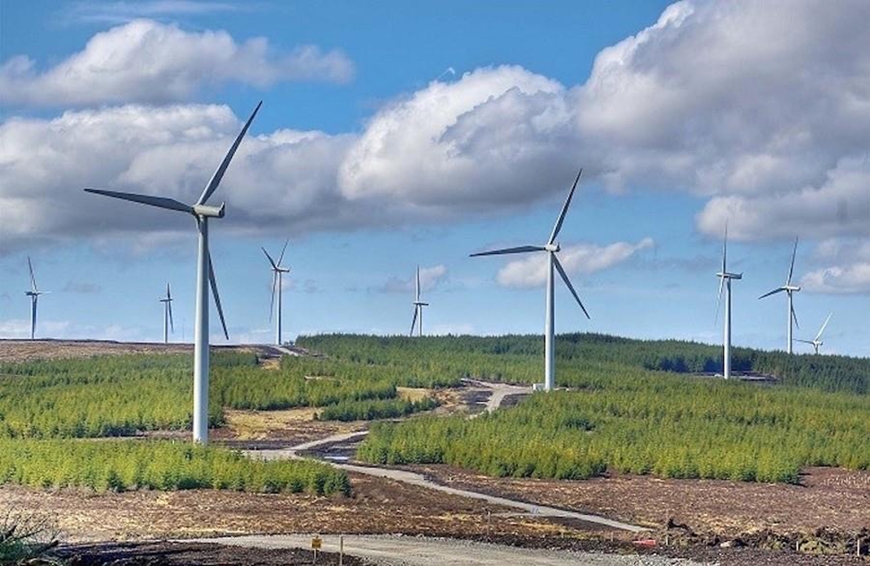Dual transition – a pillar of Vietnam’s economic growth
Wed, 25 Dec 2024 13:32:00 | Print | Email Share:
“Dual transition – digital transformation and green transition” has become a strategic growth trend in many countries, which helps them moving towards both sustainability and digital targets, making the most of the benefits from this dual transition.

For instance, as the world’s largest digital economy has launched the “Eastern Data and Western Computing” initiative to relocate data centers from the eastern region, where land and energy resources are limited, to the western region, leveraging natural cooling, clean energy, and cost-effective resources.
Vietnam has emerged as the most active country in Asia as well as in the world, which also keeps up with this trend, taking digital transformation and green transition as its important growth drivers. We can see the multi-dimensional efforts of Vietnam’s Government to keep up with the dual transition trend. For instance, they already have a National Strategy for Digital Economy and Digital Society Development to 2025, a vision to 2030, and a National Green Growth Strategy for 2021-2030 and a vision to 2050. 2025 will be a key milestone as Vietnam is going to achieve a lot of important goals, including the digital economy accounting for 25% of its GDP and green credit accounting for 10% of total outstanding debts.
In response to the Government’s efforts, businesses are rewiring their organisations and deploying technology integration at scale. As of 2023, 47% of businesses in Vietnam have undergone some kind of digital transformation, according to the Enterprise Development Agency (MPI). They have also started working out their own net zero transition plans. The awareness of local businesses has been rising. According to a PwC 2022 survey, 40% of them have planned for and set themselves ESG commitments. A net zero transition was said to be critical to them by 48.7% of businesses in a 2024 survey by the Vietnamese Government’s Private Economic Development Research Board.
In fact, Vietnam has conducive conditions to implement the dual transition. Its demographic tailwinds include a population of over 100 million, a work force that is 70% of the total population, almost 80% of Vietnam’s population using the internet, smartphone ownership has doubled from a decade ago, etc. All of these have contributed to opening up a huge potential of digital consumption for Vietnam. Vietnam is among the fastest-growing in ASEAN, with impressive growth of 16%, according to the e-Conomy SEA 2024 report. Measured by gross merchandise value (GMV), the country has the potential to become the second-largest digital market in the region by 2030.
Moreover, Vietnam's renewable energy potential is also huge. As the most naturally suited country in Southeast Asia to develop wind and solar energy, Vietnam already ranks 2nd among developing countries in attracting FDI into the renewable energy space.
However, some challenges remain. First, how to improve Vietnam’s digital literacy should be among top priorities. Encouragingly, the National Digital Transformation Program is a good example of the government’s efforts in playing an active role to facilitate the digital transformation of the economy. All in all, digitalisation brings both opportunities and challenges to Vietnam. In order to leverage its favourable demographics and achieve its digital ambitions, investments need to be channelled into not just new areas such as artificial intelligence (AI), but also foundational areas such as digital education and traditional infrastructure.
Both the digital and green transitions require enormous investments, in which finance will play a critical role. Vietnam’s state budget for fighting climate change can provide about US$130bn, less than half of what is needed. Cost is also the top challenge in digital transformation, as cited by 60% of businesses in a survey by the Ministry of Planning and Investment in collaboration with the USAID. Global banks like HSBC can help to facilitate finance, connect investors, provide our clients with relevant expertise, and channel capital in the right direction.
Last but not least, Vietnam should continue to invest more in infrastructure, which is fundamental to its economic growth and quality FDI attraction. The Government is committed to pushing public investment, focusing on strategic infrastructure projects that connect economic hubs. This will be a key booster to take Vietnam into the new era of transformation.
By: BUSINESS FORUM MAGAZINE
Source: https://en.diendandoanhnghiep.vn/dual-transitiona-pillar-of-vietnam-s-economic-growth-n41768.html
---------------------------------------------
Same category News :













